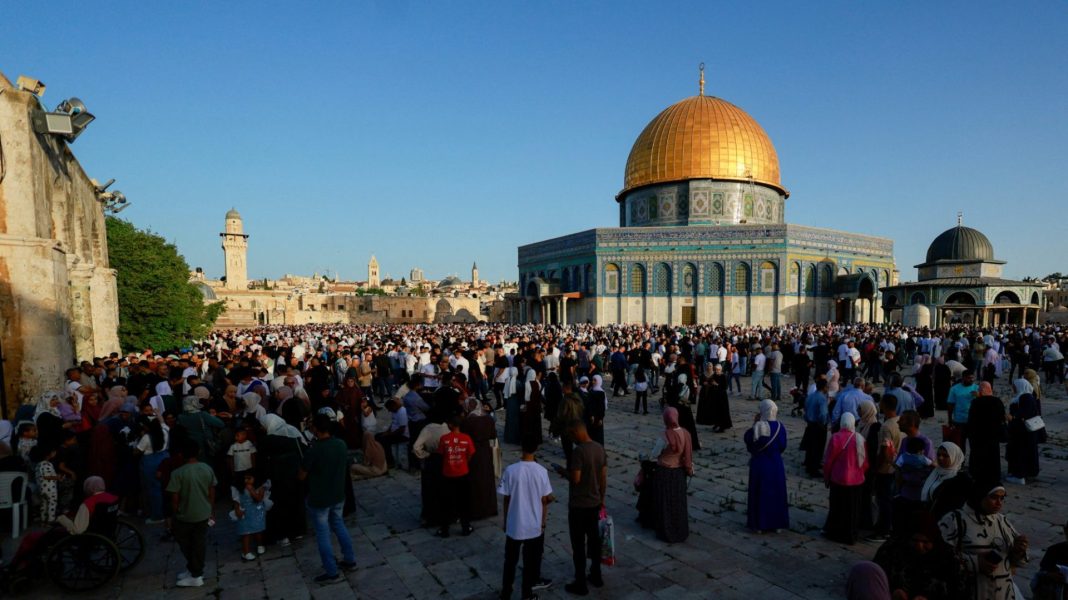Hundreds of people, mainly young men, were prevented at checkpoints in the Old City from reaching the religious site, with some being beaten by batons, pushed and shoved by Israeli officers.
Ahead of the prayer to mark Eid al-Adha, which is celebrated by Muslims worldwide at the end of Hajj, the Islamic pilgrimage to Mecca, Israeli troops also stormed the courtyard of Al-Aqsa Mosque.
The Islamic Waqf, or religious endowment, announced that only around 40,000 Palestinians managed to pray inside Al-Aqsa Mosque.
Eid prayers often draw hundreds of thousands of Palestinians from East Jerusalem and the West Bank.
However, Israeli authorities have increased their restriction on Muslims’ access to the Jerusalem site since 7 October, severely limiting the number of people allowed inside.
Similar restrictions were also placed on Palestinians in Hebron’s Ibrahimi Mosque, where Israeli soldiers allowed only 8,000 people to pray there, according to local media.
In war-torn Gaza, Palestinians held Eid al-Adha prayers next to ruins of destroyed homes and mosques.
The Israeli war on the besieged strip, now in its ninth month, has distorted most residential buildings and mosques, turning the 365 sqkm enclave into a hellscape.
More than 800 mosques have been damaged, including 600 fully destroyed, according to the Gaza-based government media office.
Among them is the Great Omari Mosque, in the Old City, which is Gaza’s oldest mosque.
In total, at least 137,297 structures, more than half of all buildings in the Gaza Strip, have been destroyed by Israel’s bombing campaign, according to satellite imagery analysed by the United Nations Satellite Centre.
The UN agency for Palestinian refugees (UNRWA) stressed the destruction in Gaza was “indescribable” and clearing the rubble would take years.
